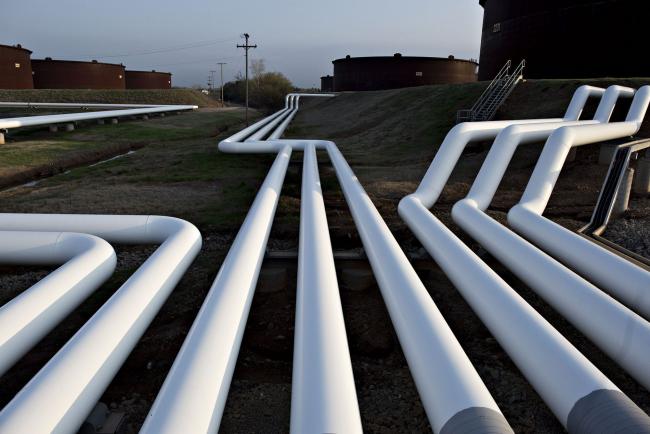This post was originally published on this site
https://d1-invdn-com.akamaized.net/content/pic7c93dbb052075c104d25afdc2d3bce23.jpg
Production is expected to average 11.76 million barrels a day through December, down from a previous forecast of 12.99 million barrels, the Energy Information Administration said on Tuesday. The agency also trimmed its 2021 output expectations by 1.6 million barrels a day to just over 11 million daily barrels.
The report comes just days before OPEC, Russia and other producers meet to negotiate a round of coordinated output curbs meant to stem crude’s historic plunge. President Donald Trump, who has been trying to broker a deal to end the price war between the Saudis and Russians, faces pressure from his counterparts to join in a global supply-cut agreement after prices plunged to their lowest levels in almost two decades.
The latest forecasts reinforce comments that Trump made just a day ago about low oil prices already forcing U.S. oil producers to cut back.
“The cuts are automatic if you’re a believer in markets,” he told reporters late Monday. “They’re already cutting. If you look, they’re cutting back. It’s the market. It’s demand. It’s supply and demand. They’re already cutting back and they’re cutting back very seriously.”
Massive Surplus
The EIA also slashed its 2020 global petroleum supply forecast by 2.7 million barrels a day, and reported a looming supply surplus of 11.4 million daily barrels in the second quarter. That would eclipse the 10 million barrel-a-day production cut Trump has suggested OPEC+ shoulder in a bid to resuscitate the market.
The agency’s 2021 forecast bottoms out at 10.91 million barrels a day in March 2021. That would amount to a production cut of almost 2 million barrels a day from the all-time high of 12.87 million barrels in November 2019.
The Energy Department attributed its gloomy production outlook to “unprecedented worldwide demand impacts of Covid-19 coupled with the disruptive actions of the ongoing dispute between OPEC + nations,” agency spokeswoman Shaylyn Hynes said in a statement. “The Secretary is confident that both of these forces are temporary, and the market will recover,” she said, referring to Energy Secretary Dan Brouillette.
The market rout — spurred by coronavirus-related lockdowns and a price war for market share between the Saudis and Russians — has already forced shale explorers to pare back their budgets. With storage rapidly filling up and nowhere for excess barrels to go, some companies are already starting to shut in wells.
Net Importer
“The U.S. oil industry is being wrestled to the ground by the Russians and Saudis,” Michael Lynch, president of Strategic Energy and Economic Research in Winchester, Massachusetts, said before the report was released. “Involuntary participation is the best way to put it.”
EIA forecasts that the U.S. will return to being a net importer of crude oil and petroleum products in the third quarter of 2020 and remain a net importer in most months through the end of the forecast period. The agency expects Brent, the global benchmark crude, to average $33.04 a barrel this year, down from earlier expectations of $43.30.
The U.S. will join in a discussion of energy ministers from the Group of 20 industrialized nations on Friday that will follow the OPEC + meeting, the Energy Department said.
©2020 Bloomberg L.P.

